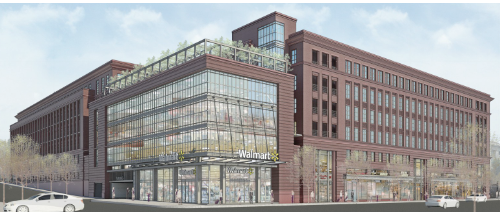 Sacramento has done great things lately. A new light-rail line extends from downtown to a rapidly redeveloping neighborhood near the river. A strong Sustainable Communities Strategy was recently approved by the region. Smart growth is taking root in the sprawling region.
Sacramento has done great things lately. A new light-rail line extends from downtown to a rapidly redeveloping neighborhood near the river. A strong Sustainable Communities Strategy was recently approved by the region. Smart growth is taking root in the sprawling region.
Unfortunately, old habits die hard. The Sacramento Bee reports that Sacramento County supervisors approved a smart-growth redesign of Watt Avenue, an aging, low-density commercial strip, and immediately granted a waiver for Wal-Mart to move in to the very heart of the corridor, the part closest to the city and closest to light rail.
Staff argued that Wal-Mart would generate jobs, provide access to cheap groceries, and help catalyze growth in the area. Supervisors reportedly were only concerned with pedestrian safety and not the store's traffic or the store's design. It also apparently didn't occur to them that supermarkets would move in on their own as the corridor developed.
I can't comment on the wisdom of a smart-growth corridor extending in a thin, four-mile line through some fairly suburban neighborhoods far from the central city, though at first glance the land-use and parking requirements don't seem particularly progressive. What I can comment on is placing a suburban-style, car-centric Wal-Mart where the supervisors want to encourage anything but driving.
In short, it's crazy, a poison pill. Nobody likes to walk by a strip mall parking lot. When was the last time you walked next to a 10-acre parking lot on a summer day? What about walking through it to get to the bus? Now imagine doing that in a Central Valley summer. I shudder to consider it. If Sacramento County wants to build a walkable, transit-oriented corridor, they need to stop granting approvals for projects that stand in direct contradiction to their goals.
It's like saying you want to lose weight, but you still let yourself have McDonald's for lunch every day. Your goal is at odds with your actions, and any progress you might make will be slowed or stalled entirely because of it.
Department stores, the classier ancestors of the big-box genre of stores, were once an integral part of walking around downtown. Macy's, now more associated with the mall, even throws a parade in New York on Thanksgiving to celebrate its connection with that most urban of communities. Wal-Mart is trying to recapture that feel in Washington, DC, building urban-style stores with apartments and offices above and smaller shops along the sides. The parking lot is an underground garage.
Wal-Mart, in other words, didn't need a waiver from the density minimums and could have anchored the smart-growth corridor with a smart-growth store. The Sacramento County Board and staff should have pushed for something better, but instead they will be saddled with a strip mall in a place that is supposed to be the opposite.
Thankfully, Marin's governments are a bit more savvy, and Marin's residents are much more wary, than to allow such a fiasco. What we do allow, though, are sprawl projects that take life out of our downtowns. Hanna Ranch, for instance, could have been a major boost to downtown Novato had the city been willing to push the project there. Instead, it will be a greenfield sprawl development beyond that giant dead-end called Vintage Oaks.
While we draw up new general plans, our governments and people need to keep in mind their more philosophical goals: to protect the character of each town, to strengthen and preserve town centers, and to focus what growth we do allow in ways that will do those things. Otherwise, we risk just the sort of near-sighted foolishness exemplified in Sacramento County's decision, and that would be a tragedy.

